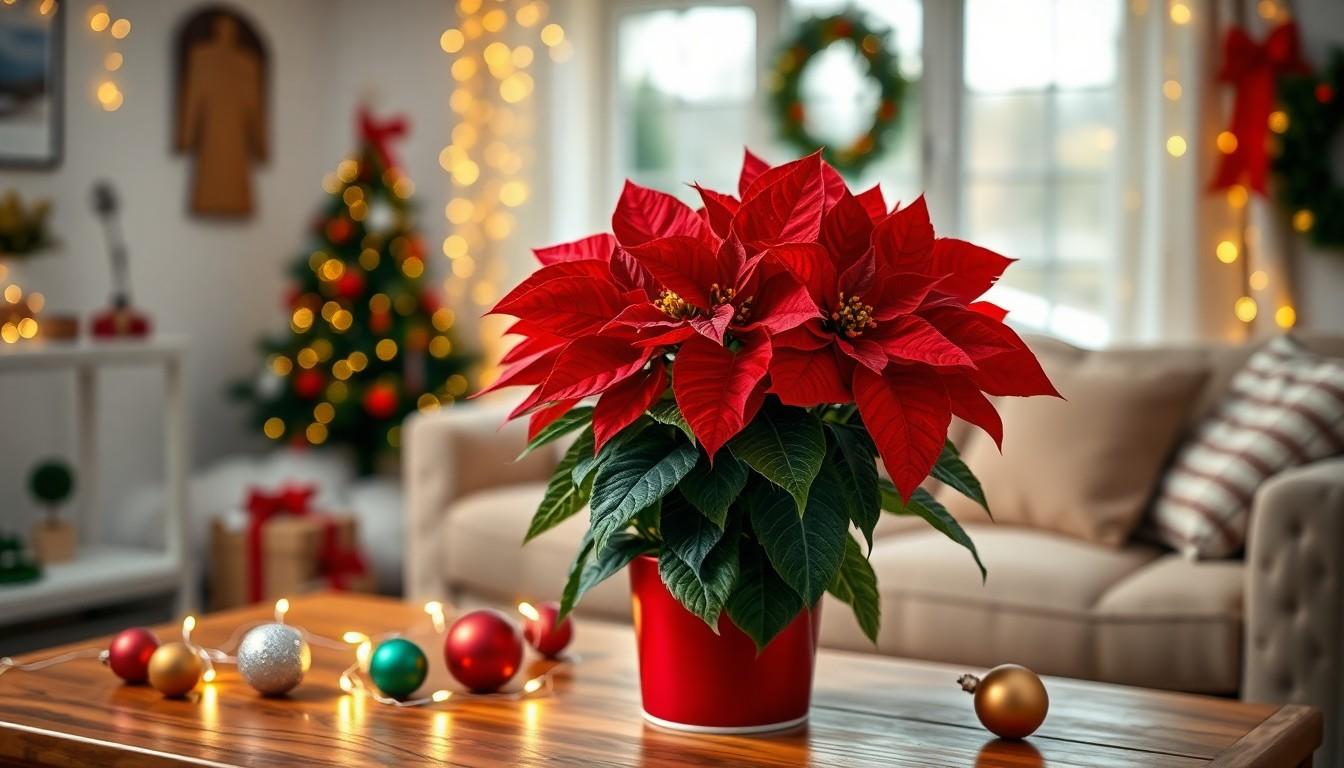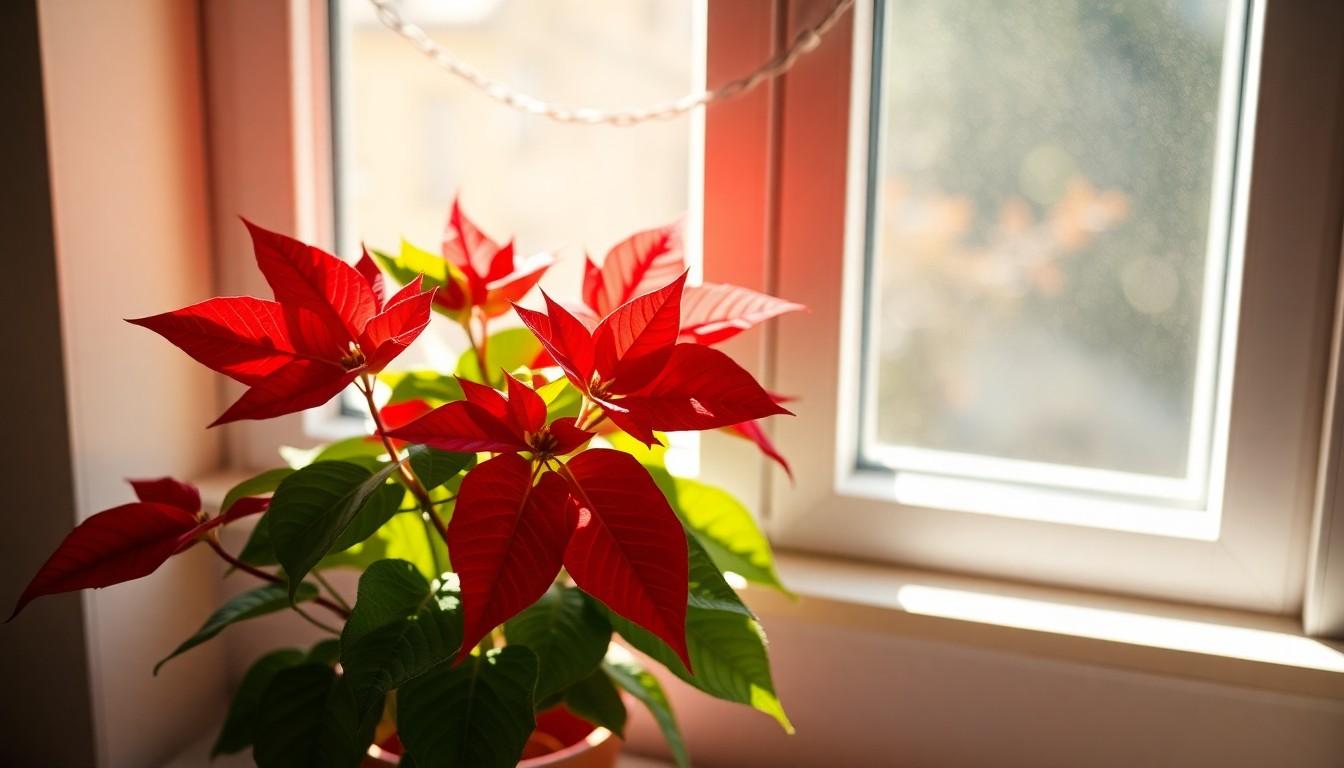Phone:
(701)814-6992
Physical address:
6296 Donnelly Plaza
Ratkeville, Bahamas.

Poinsettias are the stars of the holiday season, bringing vibrant red and green hues to homes everywhere. But let’s be honest: keeping these festive beauties alive can feel like a high-stakes game of plant roulette. One minute they’re thriving, and the next, they’re drooping like they just heard the punchline to a terrible joke.
Poinsettia plants stand out for their vibrant colors and festive appeal, particularly during the holiday season. Caring for these plants involves understanding their background and various types.
Poinsettias originate from Mexico, where they were cultivated by the Aztecs for medicinal purposes. The plant gained popularity in the United States thanks to Joel Poinsett, the first U.S. ambassador to Mexico, who introduced it in the 1820s. A deep cultural significance surrounds poinsettias, often symbolizing the holiday spirit and used as decorations during Christmas. The plants are sometimes associated with religious traditions, as their red and green colors evoke feelings of joy and celebration.
Numerous poinsettia varieties exist, appealing to diverse aesthetic preferences. The most recognized type features bright red bracts; however, variations abound in colors like pink, white, and marbled versions. ‘Jingle Bells’ showcases striking red and white bracts, while ‘Ice Crystal’ features soft white accents. Some growers produce miniatures for compact spaces, adding uniqueness to décor schemes. Each variety presents distinct care needs, yet all thrive with proper attention to sunlight, watering, and temperature conditions.

Poinsettias require specific care to flourish. Addressing light, water, and soil needs is vital for healthy growth.
Bright, indirect sunlight works best for poinsettias. Exposure to direct sunlight can scorch leaves. Position them near a window that provides filtered light. Rotate the plant occasionally for even growth. Inadequate light leads to leggy stems and poor color development.
These plants prefer consistent moisture without waterlogging. Check the soil’s top inch; if dry, water thoroughly until it drains from the bottom. Avoid letting the plant sit in water, as this can cause root rot. During blooming, regular watering becomes essential but reduce it slightly when blooms fade.
Well-draining potting mixes promote healthy root systems for poinsettias. Use a mix containing peat moss and perlite or coarse sand. Soil pH should ideally range from 6.0 to 6.5. Re-pot when roots outgrow the current container, providing fresh nutrients essential for ongoing growth.
Caring for a poinsettia plant varies by season. Understanding specific needs during winter and after the holiday season can enhance its longevity.
During winter, keep the poinsettia in a warm environment. Temperatures between 65°F and 70°F promote healthy growth. Limit exposure to drafts and cold windows to prevent stress. Watering should occur less frequently, typically every two weeks, as the plant requires less moisture. Ensure the pot has drainage holes to avoid water accumulation. Light exposure remains important; aim for bright, indirect light to support color retention without leaf scorch.
After the holiday season, adjust your care routine. Reduce watering as the plant enters dormancy; once the soil dries out, wait to water again. Trimming back any wilted or brown leaves encourages new growth. Repotting may be necessary if the root system outgrows its current pot, providing fresh soil and nutrients. Gradually introduce outdoor conditions once temperatures warm up in spring to promote resurgence. Transitioning your poinsettia back outside requires time for acclimatization while ensuring adequate light and shade balance.
Poinsettias face several common issues that affect their health. Addressing these concerns promptly enhances their longevity.
Spider mites and aphids frequently target poinsettias. Signs include yellowing leaves and webbing on stems. Regularly inspecting the leaves helps catch infestations early. Washing the plant with lukewarm water removes pests effectively. Introducing beneficial insects like ladybugs can aid in pest control. Using insecticidal soap as a treatment offers an extra layer of protection.
Poinsettias are prone to root rot, particularly from overwatering. Symptoms often manifest as wilting despite moist soil. Ensuring proper drainage in pots prevents excess moisture accumulation. Leaf blight also poses a threat, presenting as dark spots on leaves. Improving air circulation around the plant helps reduce disease incidence. Utilizing fungicides can effectively manage fungal infections when necessary. Regularly checking for signs of disease allows for timely intervention.
Caring for a poinsettia plant can be a rewarding experience that adds a festive touch to any home. With the right attention to light watering and temperature conditions these vibrant plants can thrive well beyond the holiday season. By understanding their specific needs and addressing common issues promptly it’s possible to enjoy their beauty year after year. Whether it’s the classic red variety or a unique cultivar each poinsettia has its charm. Embracing the care tips outlined will not only enhance the plant’s longevity but also deepen the appreciation for this symbol of holiday spirit.